Device Model high-level design¶
Hypervisor Device Model (DM) is a QEMU-like application in SOS responsible for creating a UOS VM and then performing devices emulation based on command line configurations.
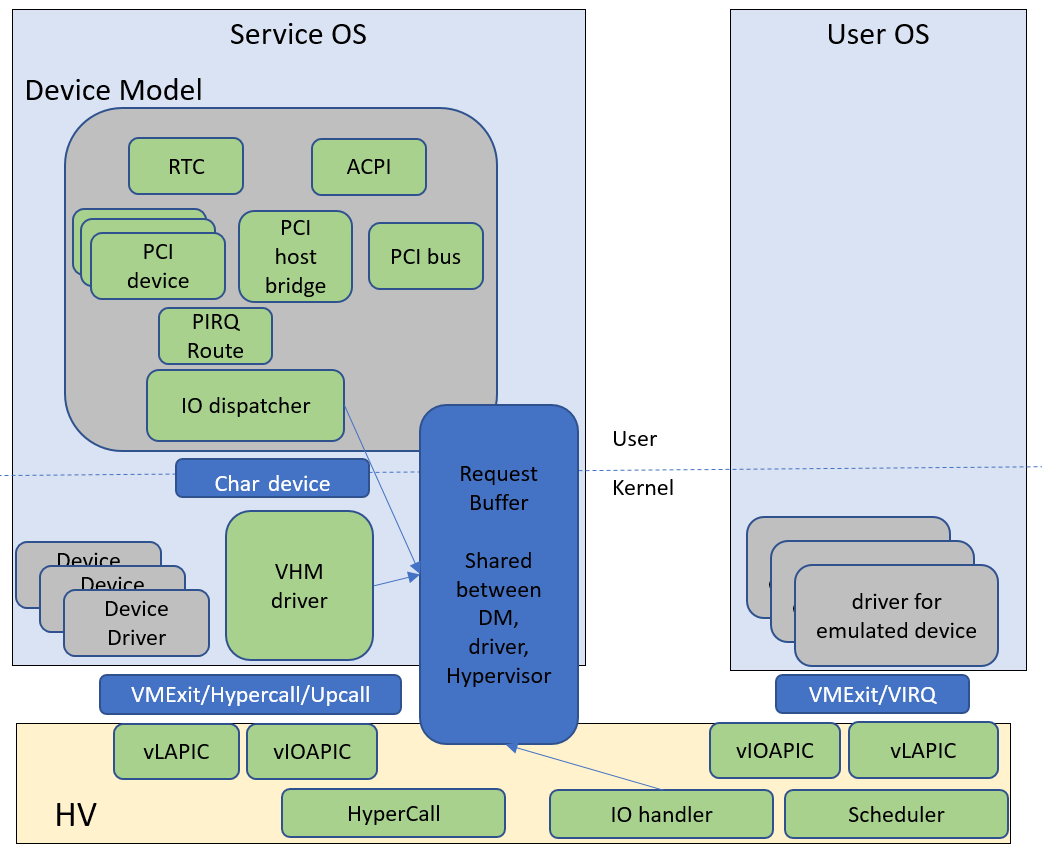
Figure 96 Device Model Framework
Figure 96 above gives a big picture overview of DM framework. There are 3 major subsystems in SOS:
- Device Emulation: DM provides backend device emulation routines for frontend UOS device drivers. These routines register their I/O handlers to the I/O dispatcher inside the DM. When the VHM assigns any I/O request to the DM, the I/O dispatcher dispatches this request to the corresponding device emulation routine to do the emulation.
- I/O Path in SOS:
- HV initializes an I/O request and notifies VHM driver in SOS through upcall.
- VHM driver dispatches I/O requests to I/O clients and notifies the clients (in this case the client is the DM which is notified through char device)
- DM I/O dispatcher calls corresponding I/O handlers
- I/O dispatcher notifies VHM driver the I/O request is completed through char device
- VHM driver notifies HV on the completion through hypercall
- DM injects VIRQ to UOS frontend device through hypercall
- VHM: Virtio and HV service Module is a kernel module in SOS as a middle layer to support DM. Refer to chapter 5.4 for details
This chapter introduces how the acrn-dm application is configured and walks through the DM overall flow. We’ll then elaborate on device, ISA, and PCI emulation.
Configuration¶
The acrn-dm runs using these command line configuration options:
acrn-dm [-hAWYv] [-B bootargs] [-c vcpus] [-E elf_image_path]
[-G GVT_args] [-i ioc_mediator_parameters] [-k kernel_image_path]
[-l lpc] [-m mem] [-p vcpu:hostcpu] [-r ramdisk_image_path]
[-s pci] [-U uuid] [--vsbl vsbl_file_name] [--ovmf ovmf_file_path]
[--part_info part_info_name] [--enable_trusty] [--intr_monitor param_setting]
[--vtpm2 sock_path] [--virtio_poll interval] [--mac_seed seed_string]
[--vmcfg sub_options] [--dump vm_idx] [--ptdev_no_reset] [--debugexit]
[--lapic_pt] <vm>
-A: create ACPI tables
-B: bootargs for kernel
-c: # cpus (default 1)
-E: elf image path
-G: GVT args: low_gm_size, high_gm_size, fence_sz
-h: help
-i: ioc boot parameters
-k: kernel image path
-l: LPC device configuration
-m: memory size in MB
-p: pin 'vcpu' to 'hostcpu'
-r: ramdisk image path
-s: <slot,driver,configinfo> PCI slot config
-U: uuid
-v: version
-W: force virtio to use single-vector MSI
-Y: disable MPtable generation
--mac_seed: set a platform unique string as a seed for generate mac address
--vmcfg: build-in VM configurations
--dump: show build-in VM configurations
--vsbl: vsbl file path
--ovmf: ovmf file path
--part_info: guest partition info file path
--enable_trusty: enable trusty for guest
--ptdev_no_reset: disable reset check for ptdev
--debugexit: enable debug exit function
--intr_monitor: enable interrupt storm monitor
its params: threshold/s,probe-period(s),delay_time(ms),delay_duration(ms),
--virtio_poll: enable virtio poll mode with poll interval with ns
--vtpm2: Virtual TPM2 args: sock_path=$PATH_OF_SWTPM_SOCKET
--lapic_pt: enable local apic passthrough
See Device Model Parameters for more detailed descriptions of these configuration options.
Here’s an example showing how to run a VM with:
- Build ACPI table
- vSBL as the boot ROM
- UART device on PCI 00:01.0
- GPU device on PCI 00:02.0
- Virtio-block device on PCI 00:03.0
- Virtio-net device on PCI 00:04.0
acrn-dm -A -m 2048M -c 3 \
-s 0:0,hostbridge \
-s 1:0,lpc -l com1,stdio \
-s 5,virtio-console,@pty:pty_port \
-s 3,virtio-blk,b,/data/clearlinux/clearlinux.img \
-s 4,virtio-net,tap_LaaG --vsbl /usr/share/acrn/bios/VSBL.bin \
--intr_monitor 10000,10,1,100 \
-B "root=/dev/vda2 rw rootwait maxcpus=3 nohpet console=hvc0 \
console=ttyS0 no_timer_check ignore_loglevel log_buf_len=16M \
consoleblank=0 tsc=reliable i915.avail_planes_per_pipe=0x070F00 \
i915.enable_guc_loading=0 \
i915.enable_hangcheck=0 i915.nuclear_pageflip=1 \
i915.enable_guc_submission=0 i915.enable_guc=0" vm1
DM Initialization¶
Figure 97 shows the overall flow for the DM boot up:
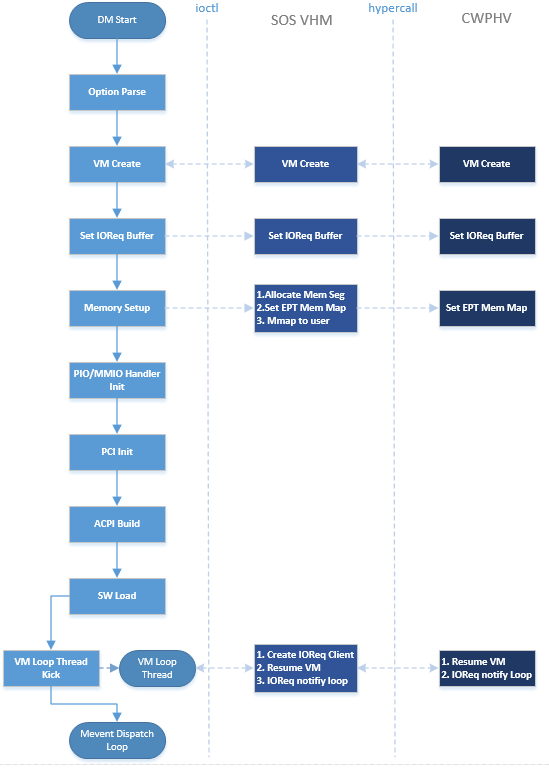
Figure 97 Device Model Boot Flow
DM Start: DM application starts to run.
Option Parsing: DM parse options from command line inputs.
VM Create: DM calls ioctl to SOS VHM, then SOS VHM makes hypercalls to HV to create a VM, it returns a vmid for a dedicated VM.
Set I/O Request Buffer: the I/O request buffer is a page buffer allocated by DM for a specific VM in user space. This buffer is shared between DM, VHM and HV. Set I/O Request buffer calls an ioctl executing a hypercall to share this unique page buffer with VHM and HV. Please refer to chapter 3.4 and 4.4 for more details.
Memory Setup: UOS memory is allocated from SOS memory. This section of memory will use SOS hugetlbfs to allocate linear continuous host physical address for guest memory. It will try to get the page size as big as possible to guarantee maximum utilization of TLB. It then invokes a hypercall to HV for its EPT mapping, and maps the memory segments into user space.
PIO/MMIO Handler Init: PIO/MMIO handlers provide callbacks for trapped PIO/MMIO request which are triggered from I/O request server in HV for DM owned device emulation. This is the endpoint of I/O path in DM. After this initialization, device emulation driver in DM could register its MMIO handler by register_mem() API and PIO handler by register_inout() API or INOUT_PORT() macro.
PCI Init: PCI initialization scans PCI bus/slot/function to identify each configured PCI device on the acrn-dm command line and initializes their configuration space by calling their dedicated vdev_init() function. For more detail of DM PCI emulation please refer to section 4.6.
ACPI Build: If there is “-A” option in acrn-dm command line, DM will build ACPI table into its VM’s F-Segment (0xf2400). This ACPI table includes full tables for RSDP, RSDT, XSDT, MADT, FADT, HPET, MCFG, FACS, and DSDT. All these items are programed according to acrn-dm command line configuration and derived from their default value.
SW Load: DM prepares UOS VM’s SW configuration such as kernel, ramdisk, and zeropage, according to these memory locations:
#define RAMDISK_LOAD_OFF(ctx) (ctx->lowmem - 4*MB) #define BOOTARGS_LOAD_OFF(ctx) (ctx->lowmem - 8*KB) #define KERNEL_ENTRY_OFF(ctx) (ctx->lowmem - 6*KB) #define ZEROPAGE_LOAD_OFF(ctx) (ctx->lowmem - 4*KB) #define KERNEL_LOAD_OFF(ctx) (16*MB)
For example, if the UOS memory is set as 800M size, then SW Load will prepare its ramdisk (if there is) at 0x31c00000 (796M), bootargs at 0x31ffe000 (800M - 8K), kernel entry at 0x31ffe800(800M - 6K) and zero page at 0x31fff000 (800M - 4K). The hypervisor will finally run VM based on these configurations.
Note that the zero page above also includes e820 setting for this VM. The DM defines its VM e820 table according to this configuration:
/* * Default e820 mem map: * * there is reserved memory hole for PCI hole and APIC etc * so the memory layout could be separated into lowmem & highmem. * - if request memory size <= ctx->lowmem_limit, then there is only * map[0]:0~ctx->lowmem for RAM * ctx->lowmem = request_memory_size * - if request memory size > ctx->lowmem_limit, then there are * map[0]:0~ctx->lowmem_limit & map[2]:4G~ctx->highmem for RAM * ctx->highmem = request_memory_size - ctx->lowmem_limit * * Begin End Type Length * 0: 0 - 0xef000 RAM 0xEF000 * 1 0xef000 - 0x100000 (reserved) 0x11000 * 2 0x100000 - lowmem RAM lowmem - 0x100000 * 3: lowmem - bff_fffff (reserved) 0xc00_00000-lowmem * 4: 0xc00_00000 - dff_fffff PCI hole 512MB * 5: 0xe00_00000 - fff_fffff (reserved) 512MB * 6: 1_000_00000 - highmem RAM highmem-4G */
VM Loop Thread: DM kicks this VM loop thread to create I/O request client for DM, runs VM, and then enters I/O request handling loop:
vm_loop(struct vmctx *ctx) { int error; ctx->ioreq_client = vm_create_ioreq_client(ctx); assert(ctx->ioreq_client > 0); error = vm_run(ctx); assert(error == 0); while (1) { int vcpu_id; struct vhm_request *vhm_req; error = vm_attach_ioreq_client(ctx); if (error) break; for (vcpu_id = 0; vcpu_id < 4; vcpu_id++) { vhm_req = &vhm_req_buf[vcpu_id]; if ((atomic_load(&vhm_req->processed) == REQ_STATE_PROCESSING) && (vhm_req->client == ctx->ioreq_client)) handle_vmexit(ctx, vhm_req, vcpu_id); } if (VM_SUSPEND_SYSTEM_RESET == vm_get_suspend_mode()) { vm_system_reset(ctx); } if (VM_SUSPEND_SUSPEND == vm_get_suspend_mode()) { vm_suspend_resume(ctx); } } quit_vm_loop = 0; printf("VM loop exit\n"); }
Mevent Dispatch Loop: It’s the final loop of the main acrn-dm thread. mevent dispatch will do polling for potential async event.
VHM¶
VHM overview¶
Device Model manages UOS VM by accessing interfaces exported from VHM
module. VHM module is an SOS kernel driver. The /dev/acrn_vhm node is
created when VHM module is initialized. Device Model follows the standard
Linux char device API (ioctl) to access the functionality of VHM.
In most of ioctl, VHM converts the ioctl command to a corresponding hypercall to the hypervisor. There are two exceptions:
- I/O request client management is implemented in VHM.
- For memory range management of UOS VM, VHM needs to save all memory range info of UOS VM. The subsequent memory mapping update of UOS VM needs this information.
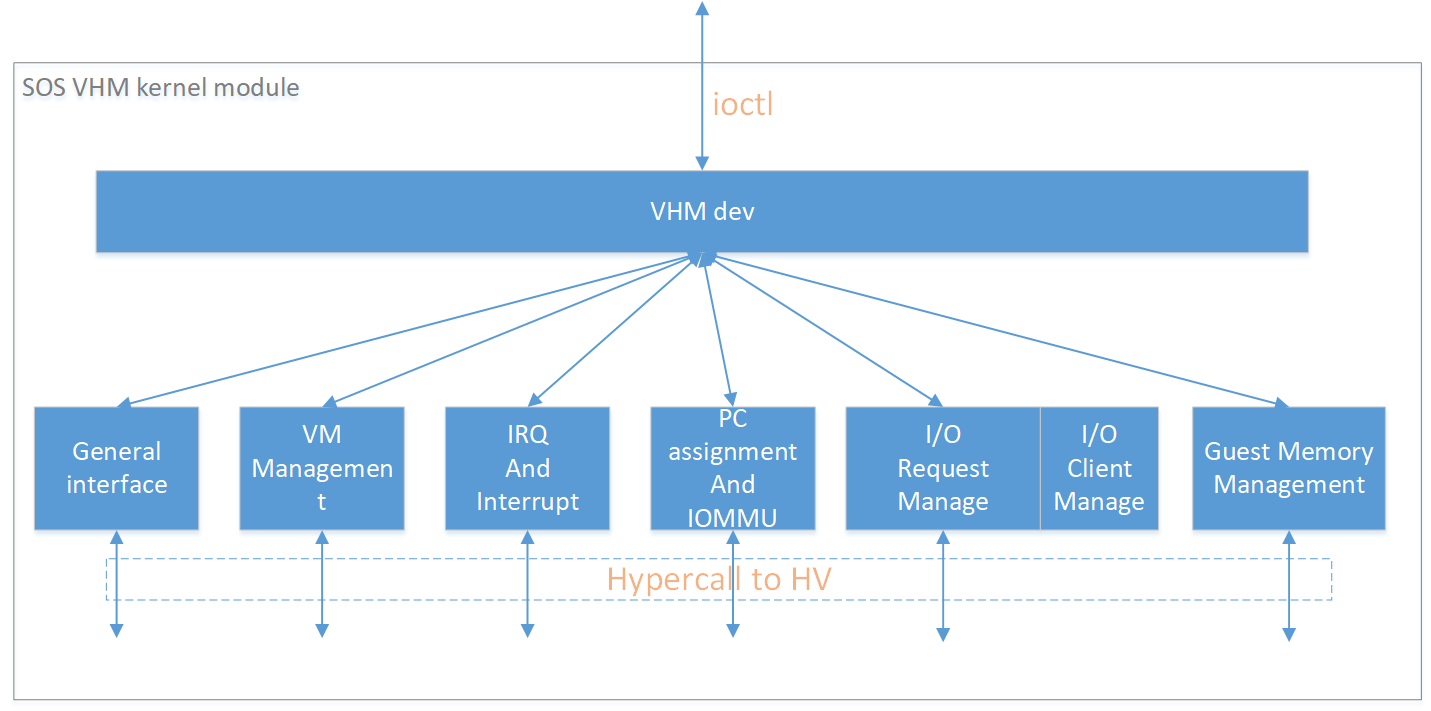
Figure 98 Architecture of ACRN VHM
VHM ioctl interfaces¶
Note
Reference API docs for General interface, VM Management, IRQ and Interrupts, Device Model management, Guest Memory management, PCI assignment, and Power management
I/O Emulation in SOS¶
I/O requests from the hypervisor are dispatched by VHM in the SOS kernel to a registered client, responsible for further processing the I/O access and notifying the hypervisor on its completion.
I/O Clients¶
An I/O client is either a SOS userland application or a SOS kernel space module responsible for handling I/O access whose address falls in a certain range. Each VM has an array of registered I/O clients which are initialized with a fixed I/O address range, plus a PCI BDF on VM creation. There is a special client in each VM, called the fallback client, that handles all I/O requests that do not fit into the range of any other client. In the current design the device model acts as the fallback client for any VM.
Each I/O client can be configured to handle the I/O requests in the client thread context or in a separate kernel thread context. Figure 99 shows how an I/O client talks to VHM to register a handler and process the incoming I/O requests in a kernel thread specifically created for this purpose.
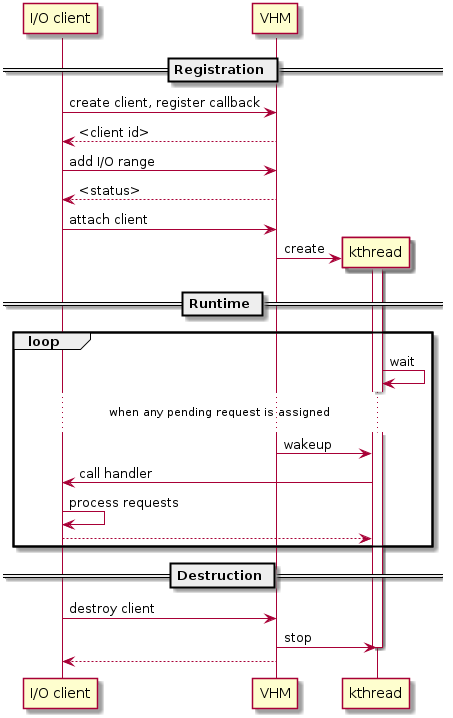
Figure 99 Interaction of in-kernel I/O clients and VHM
- On registration, the client requests a fresh ID, registers a handler, adds the I/O range (or PCI BDF) to be emulated by this client, and finally attaches it to VHM which creates the kicks off for a new kernel thread.
- The kernel thread waits for any I/O request to be handled. When a pending I/O request is assigned to the client by VHM, the kernel thread wakes up and calls the registered callback function to process the request.
- Before the client is destroyed, VHM ensures that the kernel thread exits.
An I/O client can also handle I/O requests in its own thread context. Figure 100 shows the interactions in such a case, using the device model as an example. No callback is registered on registration and the I/O client (device model in the example) attaches itself to VHM every time it is ready to process additional I/O requests. Note also that the DM runs in userland and talks to VHM via the ioctl interface in VHM ioctl interfaces.
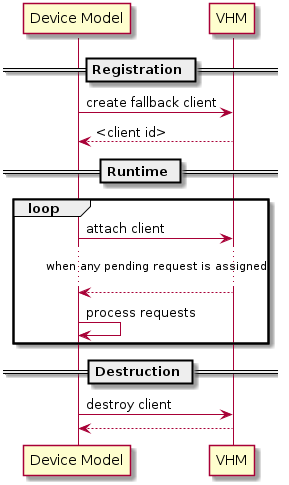
Figure 100 Interaction of DM and VHM
Refer to I/O client interfaces for a list of interfaces for developing I/O clients.
Processing I/O Requests¶
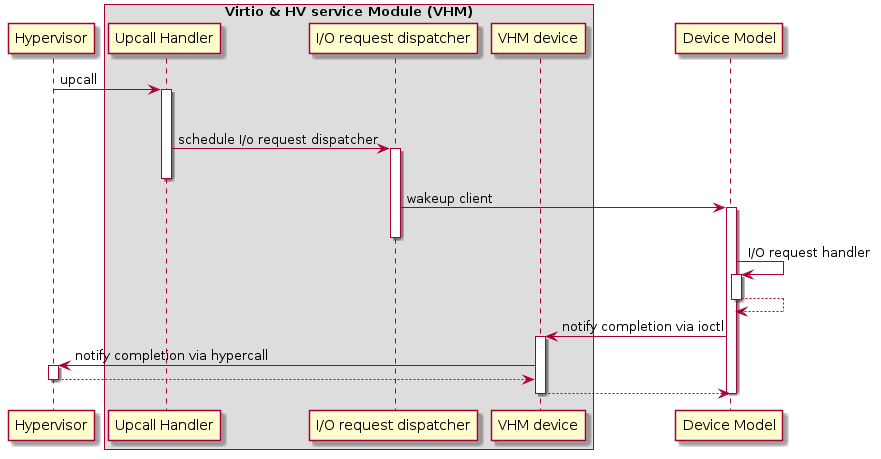
Figure 101 I/O request handling sequence in SOS
Figure 101 above illustrates the interactions among the hypervisor, VHM, and the device model for handling I/O requests. The main interactions are as follows:
- The hypervisor makes an upcall to SOS as an interrupt handled by the upcall handler in VHM.
- The upcall handler schedules the execution of the I/O request dispatcher. If the dispatcher is already running, another round of execution is scheduled.
- The I/O request dispatcher looks for I/O requests with the PENDING state, assigns them to registered clients based on the address of the I/O access, updates their state to PROCESSING, and wakes up all clients that have I/O requests to be processed. The flow is illustrated in more detail in Figure 102.
- The waked client (the DM in Figure 101 above) handles the assigned I/O requests, updates their state to COMPLETE, and notifies the VHM of the completion via ioctl. Figure 103 show this flow.
- The VHM device notifies the hypervisor of the completion via hypercall.
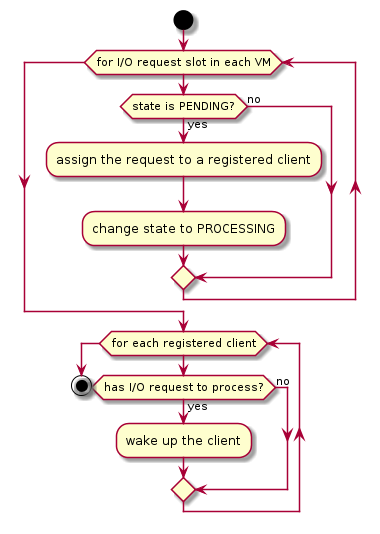
Figure 102 I/O dispatcher control flow
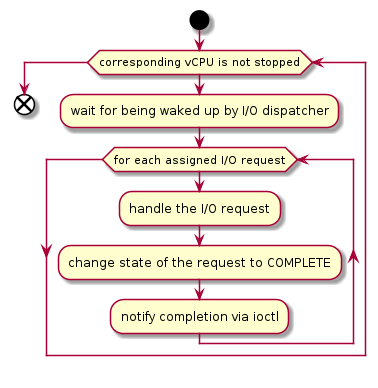
Figure 103 Device model control flow on handling I/O requests
Emulation of Accesses to PCI Configuration Space¶
PCI configuration spaces are accessed by writing to an address to I/O port 0xcf8 and then reading the I/O port 0xcfc. As the PCI configuration space of different devices is emulated by different clients, VHM handles the emulation of accesses to I/O port 0xcf8, caches the BDF of the device and the offset of the register, and delivers the request to the client with the same BDF when I/O port 0xcfc is accessed.
The following table summarizes the emulation of accesses to I/O port 0xcf8 and 0xcfc.
| BDF and offset cached | BDF and offset not cached | |
|---|---|---|
| Load from 0xcf8 | Return value previously stored to port 0xcf8 | |
| Store to 0xcf8 | If MSB of value is 1, cache BFD and offset, otherwise, invalidate cache. | |
| Load from 0xcfc | Assigned to client with same BDF, or fallback if not any. | Return all 1’s |
| Store to 0xcfc | Silently ignored | |
I/O Client Interfaces¶
Note
replace with reference to API documentation
The APIs for I/O client development are as follows:
For I/O client registration
- acrn_ioreq_create_client - create ioreq client
- acrn_ioreq_add_iorange - add iorange monitored by ioreq client
- acrn_ioreq_intercept_bdf - set intercept bdf info of ioreq client
- acrn_ioreq_get_reqbuf - get request buffer
I/O client runtime helpers.
- acrn_ioreq_attach_client - start handle request for ioreq client
- acrn_ioreq_complete_request - notify guest request handling is completed
For I/O client destruction
- acrn_ioreq_destroy_client - destroy ioreq client
- acrn_ioreq_del_iorange - del iorange monitored by ioreq client
- acrn_ioreq_unintercept_bdf - clear intercept bdf info of ioreq client
Device Emulation¶
The DM emulates different kinds of devices, such as RTC, LPC, UART, PCI devices, virtio block device, etc. It is important for device emulation can handle I/O requests from different devices including PIO, MMIO, and PCI CFG SPACE access. For example, a CMOS RTC device may access 0x70/0x71 PIO to get CMOS time, a GPU PCI device may access its MMIO or PIO bar space to complete its framebuffer rendering, or the bootloader may access a PCI devices’ CFG SPACE for BAR reprogramming.
The DM needs to inject interrupts/MSIs to its frontend devices whenever necessary. For example, a RTC device needs get its ALARM interrupt, or a PCI device with MSI capability needs to get its MSI.
DM also provides a PIRQ routing mechanism for platform devices.
PIO/MMIO/CFG SPACE Handler¶
This chapter will do a quick introduction of different I/O requests.
PIO Handler Register¶
A PIO range structure in DM is like below, it’s the parameter needed to register PIO handler for special PIO range:
Note
this should be references to API documentation in devicemodel/include/inout.h
struct inout_port {
const char *name;
int port;
int size;
int flags;
inout_func_t handler;
void *arg;
};
A PIO emulation handler is defined as:
/*
* inout emulation handlers return 0 on success and -1 on failure.
*/
typedef int (*inout_func_t)(struct vmctx *ctx, int vcpu, int in, int port, int bytes, uint32_t *eax, void *arg);
The DM pre-registers the PIO emulation handlers through MACRO INOUT_PORT, or registers the PIO emulation handers through register_inout() function after init_inout():
#define INOUT_PORT(name, port, flags, handler) \
static struct inout_port __CONCAT(__inout_port, __LINE__) = { \
#name, \
(port), \
1, \
(flags), \
(handler), \
0 \
}; \
DATA_SET(inout_port_set, __CONCAT(__inout_port, __LINE__))
int register_inout(struct inout_port *iop);
int unregister_inout(struct inout_port *iop);
MMIO Handler Register¶
A MMIO range structure is defined below. As with PIO, it’s the parameter needed to register MMIO handler for special MMIO range:
struct mem_range {
const char *name;
int flags;
mem_func_t handler;
void *arg1;
long arg2;
uint64_t base;
uint64_t size;
};
A MMIO emulation handler is defined as:
typedef int (*mem_func_t)(struct vmctx *ctx, int vcpu, int dir, uint64_t addr,
int size, uint64_t *val, void *arg1, long arg2);
DM needs to call register_mem() function to register its emulated device’s MMIO handler:
int register_mem(struct mem_range *memp);
int unregister_mem(struct mem_range *memp);
CFG SPACE Handler Register¶
As VHM intercepts the cf8/cfc PIO access for PCI CFG SPACE, the DM only needs to provide CFG SPACE read/write handlers directly. Such handlers are defined as shown below. Normally, a device emulation developer has no need to update this function.
int emulate_pci_cfgrw(struct vmctx *ctx, int vcpu, int in, int bus, int slot,
int func, int reg, int bytes, int *value)
{
pci_cfgrw(ctx, vcpu, in, bus, slot, func, reg,
bytes, (uint32_t *)value);
return 0;
}
Interrupt Interface¶
DM calls these interrupt functions to send level, edge or MSI interrupt to destination emulated devices:
/* Generate one msi interrupt to UOS, the index parameter indicates
* the msi number from its PCI msi capability. */
void pci_generate_msi(struct pci_vdev *pi, int index);
/* Generate one msix interrupt to UOS, the index parameter indicates
* the msix number from its PCI msix bar. */
void pci_generate_msix(struct pci_vdev *pi, int index);
/* Assert INTx interrupt line to high or low. */
void pci_lintr_assert(struct pci_vdev *pi);
void pci_lintr_deassert(struct pci_vdev *pi);
/* Request and release the INTx interrupt resource.
* This API will try to find one best INTx pin of this PCI slot and
* set the "Interrupt pin" field of PCI config space. */
void pci_lintr_request(struct pci_vdev *pi);
void pci_lintr_release(struct pci_vdev *pi);
/* These APIs assert/deassert vPIC interrupt lines. */
int vm_isa_assert_irq(struct vmctx *ctx, int atpic_irq, int ioapic_irq);
int vm_isa_deassert_irq(struct vmctx *ctx, int atpic_irq, int ioapic_irq);
int vm_isa_pulse_irq(struct vmctx *ctx, int atpic_irq, int ioapic_irq);
PIRQ Routing¶
Figure 104 shows a PCI device PIRQ routing example. On a platform, there could be more PCI devices than available IRQ pin resources on its PIC or IOAPIC interrupt controller. ICH HW provides a PIRQ Routing mechanism to share IRQ pin resources between different PCI devices.
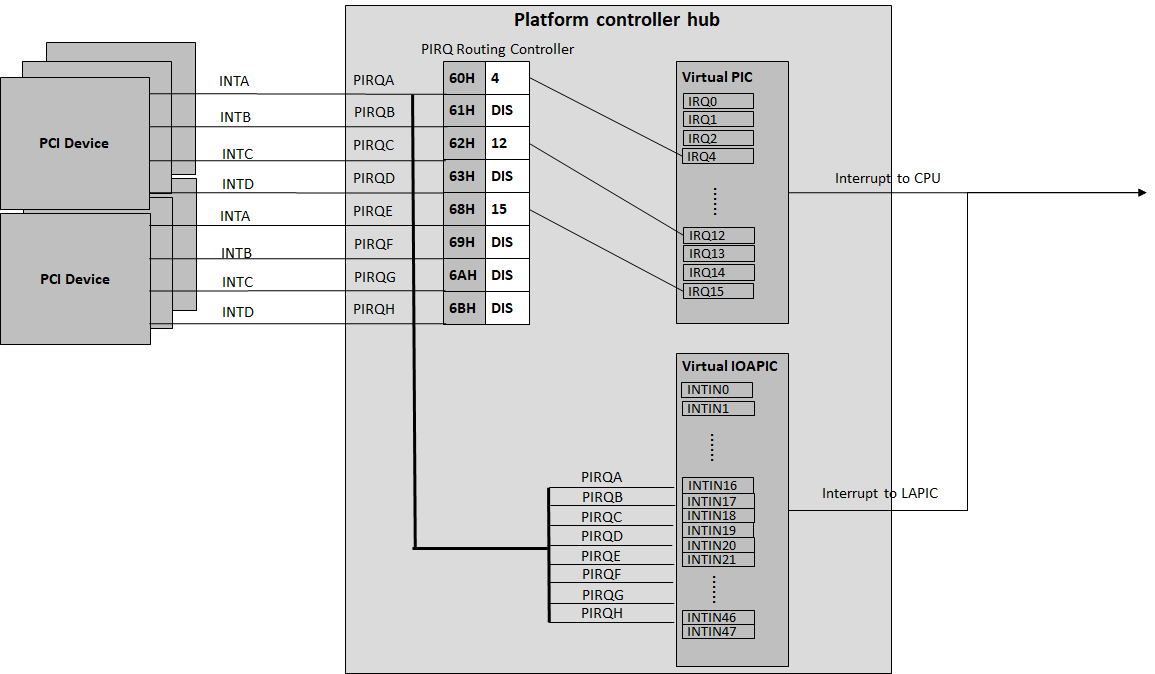
Figure 104 PIRQ Routing
DM calls pci_lintr_route() to emulate this PIRQ routing:
static void
pci_lintr_route(struct pci_vdev *dev)
{
struct businfo *bi;
struct intxinfo *ii;
if (dev->lintr.pin == 0)
return;
bi = pci_businfo[dev->bus];
assert(bi != NULL);
ii = &bi->slotinfo[dev->slot].si_intpins[dev->lintr.pin - 1];
/*
* Attempt to allocate an I/O APIC pin for this intpin if one
* is not yet assigned.
*/
if (ii->ii_ioapic_irq == 0)
ii->ii_ioapic_irq = ioapic_pci_alloc_irq(dev);
assert(ii->ii_ioapic_irq > 0);
/*
* Attempt to allocate a PIRQ pin for this intpin if one is
* not yet assigned.
*/
if (ii->ii_pirq_pin == 0)
ii->ii_pirq_pin = pirq_alloc_pin(dev);
assert(ii->ii_pirq_pin > 0);
dev->lintr.ioapic_irq = ii->ii_ioapic_irq;
dev->lintr.pirq_pin = ii->ii_pirq_pin;
pci_set_cfgdata8(dev, PCIR_INTLINE, pirq_irq(ii->ii_pirq_pin));
}
The PIRQ routing for IOAPIC and PIC is dealt with differently.
- For IOAPIC, the irq pin is allocated in a round-robin fashion within the pins permitted for PCI devices. The irq information will be built into ACPI DSDT table then passed to guest VM.
- For PIC, the pin2irq information is maintained in a pirqs[] array (the array size is 8 representing 8 shared PIRQs). When a PCI device tries to allocate a pirq pin, it will do a balancing calculation to figure out a best pin vs. irq pair. The irq# will be programed into PCI INTLINE config space and the pin# will be built into ACPI DSDT table then passed to guest VM.
Note
“irq” here is also called as “gsi” in ACPI terminology .
Regarding to INT A/B/C/D for PCI devices, DM just allocates them evenly prior to PIRQ routing and then programs into PCI INTPIN config space.
ISA and PCI Emulation¶
ISA Emulation¶
There is no explicit ISA emulation structure in DM; it calls the corresponding device initialization functions directly, and takes the usage of PIO/MMIO handler and interrupt APIs (described in I/O Client Interfaces) in its routine.
PCI Emulation¶
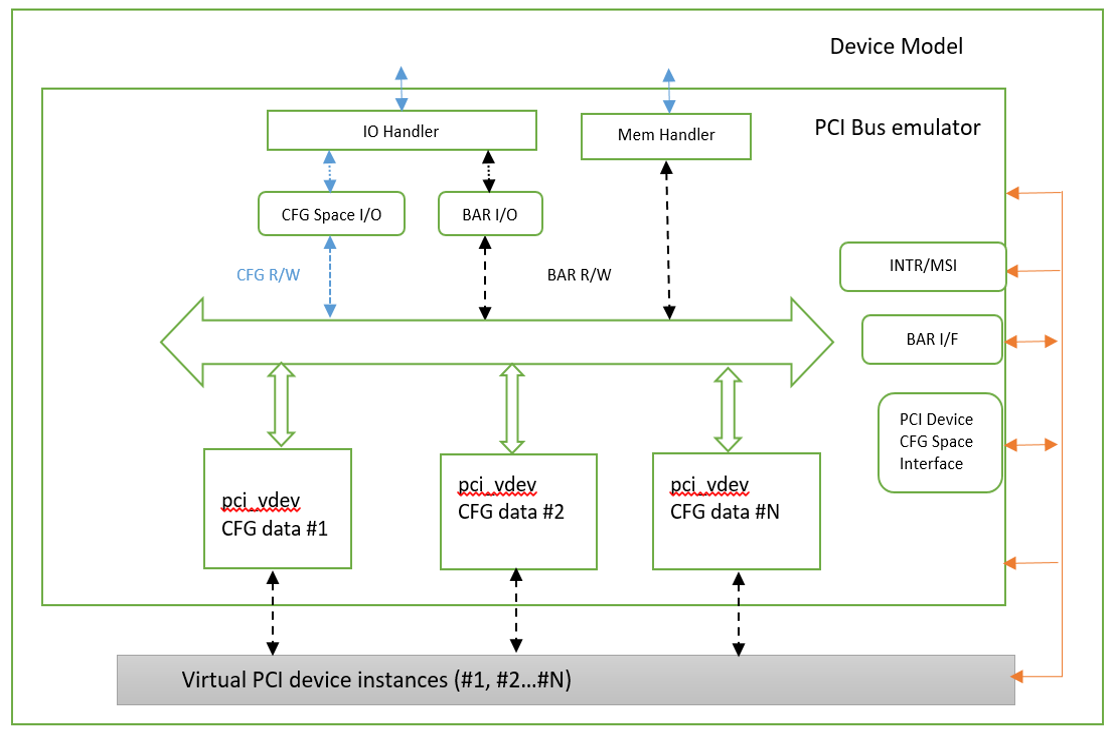
Figure 105 PCI Emulation Structure
PCI emulation takes care of three interfaces:
- PCI configuration space update interface
- BAR IO/MMIO handlers
- INTR/MSI injection
The core PCI emulation structures are:
Note
reference struct businfo API from devicemodel/hw/pci/core.c
During PCI initialization, ACRN DM will scan each PCI bus, slot and function and identify the PCI devices configured by acrn-dm command line. The corresponding PCI device’s initialization function will be called to initialize its config space, allocate its BAR resource, its irq, and do its irq routing.
Note
reference API doc for pci_vdev, pci_vdef_ops
The pci_vdev_ops of the pci_vdev structure could be installed by customized handlers for cfgwrite/cfgread and barwrite/barread.
The cfgwrite/cfgread handlers will be called from the configuration space handler. The barwrite/barread will be called from the PIO/MMIO handler.
The PCI emulation device will make use of interrupt APIs as well for its interrupt injection.
PCI Host Bridge and hierarchy¶
There is PCI host bridge emulation in DM. The bus hierarchy is determined by acrn-dm command line input. Using this command line, as an example:
acrn-dm -A -m 2048M -c 3 \
-s 0:0,hostbridge \
-s 1:0,lpc -l com1,stdio \
-s 5,virtio-console,@pty:pty_port \
-s 3,virtio-blk,b,/data/clearlinux/clearlinux.img \
-s 4,virtio-net,tap_LaaG --vsbl /usr/share/acrn/bios/VSBL.bin \
-B "root=/dev/vda2 rw rootwait maxcpus=3 nohpet console=hvc0 \
console=ttyS0 no_timer_check ignore_loglevel log_buf_len=16M \
consoleblank=0 tsc=reliable i915.avail_planes_per_pipe=0x070F00 \
i915.enable_guc_loading=0 \
i915.enable_hangcheck=0 i915.nuclear_pageflip=1 \
i915.enable_guc_submission=0 i915.enable_guc=0" vm1
the bus hierarchy would be:
$ lspci
00:00.0 Host bridge: Network Appliance Corporation Device 1275
00:01.0 ISA bridge: Intel Corporation 82371SB PIIX3 ISA [Natoma/Triton II]
00:03.0 SCSI storage controller: Red Hat, Inc. Virtio block device
00:04.0 Ethernet controller: Red Hat, Inc. Virtio network device
00:05.0 Serial controller: Red Hat, Inc. Virtio console
Note
For Clear Linux OS, the lspci command can be installed
from the “sysadmin-basic” bundle.
ACPI Virtualization¶
Introduction¶
Advanced Configuration and Power Interface (ACPI) provides an open standard that operating systems can use to discover and configure computer hardware components to perform power management for example, by monitoring status and putting unused components to sleep.
Functions implemented by ACPI include:
- System/Device/Processor power management
- Device/Processor performance management
- Configuration / Plug and Play
- System event
- Battery management
- Thermal management
All critical functions depends on ACPI tables. On an APL platform with Linux installed we can see these tables using:
$ ls /sys/firmware/acpi/tables/
APIC data DMAR DSDT dynamic FACP FACS HPET MCFG NHLT TPM2
These tables provide different information and functions:
- Advanced Programmable Interrupt Controller (APIC) for Symmetric Multiprocessor systems (SMP),
- DMA remapping (DMAR) for Intel® Virtualization Technology for Directed I/O (VT-d),
- Non-HD Audio Link Table (NHLT) for supporting audio device,
- and Differentiated System Description Table (DSDT) for system configuration info. DSDT is a major ACPI table used to describe what peripherals the machine has, and information on PCI IRQ mappings and power management
Most of the
ACPI functionality is provided in ACPI Machine Language (AML) bytecode
stored in the ACPI tables. To make use of these tables, Linux implements
an interpreter for the AML bytecode. When the BIOS is built, AML
bytecode is compiled from the ASL (ACPI Source Language) code. To
dissemble the ACPI table, use the iasl tool:
root@:Dom0 ~ $ cp /sys/firmware/acpi/tables/DMAR .
root@:Dom0 ~ $ iasl -d DMAR
Intel ACPI Component Architecture
ASL+ Optimizing Compiler/Disassembler version 20170728
Copyright (c) 2000 - 2017 Intel Corporation
Input file DMAR, Length 0xB0 (176) bytes
ACPI: DMAR 0x0000000000000000 0000B0 (v01 INTEL BDW 00000001 INTL 00000001)
Acpi Data Table [DMAR] decoded
Formatted output: DMAR.dsl - 5286 bytes
root@:Dom0 ~ $ cat DMAR.dsl
[000h 0000 4] Signature : "DMAR" [DMA Remapping table]
[004h 0004 4] Table Length : 000000B0
[008h 0008 1] Revision : 01
...
[030h 0048 2] Subtable Type : 0000 [Hardware Unit Definition]
[032h 0050 2] Length : 0018
[034h 0052 1] Flags : 00
[035h 0053 1] Reserved : 00
[036h 0054 2] PCI Segment Number : 0000
[038h 0056 8] Register Base Address : 00000000FED64000
From the displayed ASL, we can see some generic table fields, such as version info, and one VTd remapping engine description with FED64000 as base address.
We can modify DMAR.dsl and assemble it again to AML:
root@:Dom0 ~ $ iasl DMAR.dsl
Intel ACPI Component Architecture
ASL+ Optimizing Compiler/Disassembler version 20170728
Copyright (c) 2000 - 2017 Intel Corporation
Table Input: DMAR.dsl - 113 lines, 5286 bytes, 72 fields
Binary Output: DMAR.aml - 176 bytes
Compilation complete. 0 Errors, 0 Warnings, 0 Remarks
A new AML file DMAR.aml is created.
There are many ACPI tables in the system, linked together via table pointers. In all ACPI-compatible system, the OS can enumerate all needed tables starting with the Root System Description Pointer (RSDP) provided at a known place in the system low address space, and pointing to an XSDT (Extended System Description Table). The following picture shows a typical ACPI table layout in an Intel APL platform:
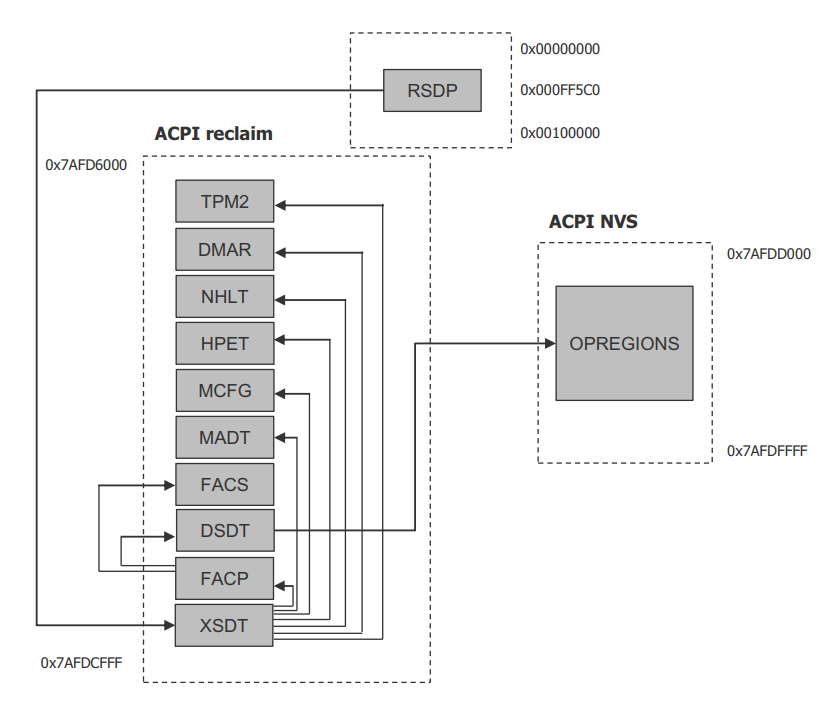
Figure 106 Typical ACPI table layout on Intel APL platform
ACPI virtualization¶
Most modern OSes requires ACPI, so we need ACPI virtualization to emulate one ACPI-capable virtual platform for guest OS. To achieve this, there are two options, depending on the way to abstract physical device and ACPI resources: Partitioning and Emulation.
ACPI Partitioning¶
One ACPI resource abstraction option is to partition all physical devices and ACPI resources between all guest OSes. That means each guest OS owns part of the devices with passthrough, as shown below:
| PCI Devices | VM0 (Cluster VM) | VM1 (IVI VM) |
|---|---|---|
| I2C | I2C3, I2C0 | I2C1, I2C2, I2C4, I2C5, I2C6, I2C7 |
| SPI | SPI1 | SPI0, SPI2 |
| USB | USB-Host (xHCI) and USB-Device (xDCI) | |
| SDIO | SDIO | |
| IPU | IPU | |
| Ethernet | Ethernet | |
| WIFI | WIFI | |
| Bluetooth | Bluetooth | |
| Audio | Audio | |
| GPIO | GPIO | |
| UART | UART |
For simplicity, early ACRN development used partitioning. To achieve the partitions, we hacked the PCI logic to make different VMs see different subsets of devices, and create one copy of the ACPI tables for each of them, as shown here:
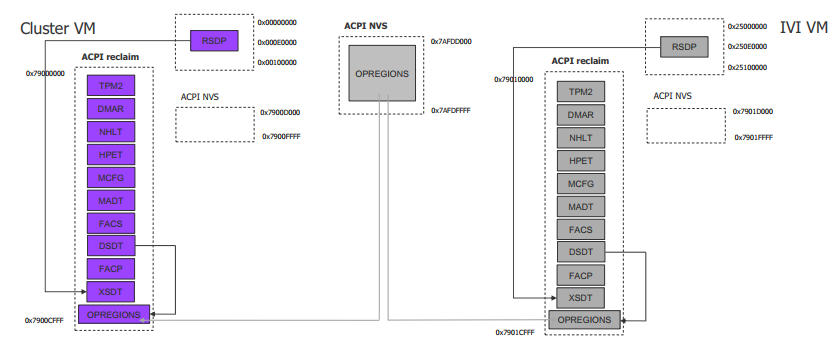
For each VM, its ACPI tables are a standalone copy, not related to the tables for other VMs. Opregion also must be copied for different VMs.
For each table, we make modifications, based on the physical table, to reflect the assigned devices to this VM. As shown in the figure below, we keep SP2(0:19.1) for VM0, and SP1(0:19.0)/SP3(0:19.2) for VM1. Anytime partition policy changes we must modify both tables again, including dissembling, modifying, and assembling, which is tricky and potentially error-prone.
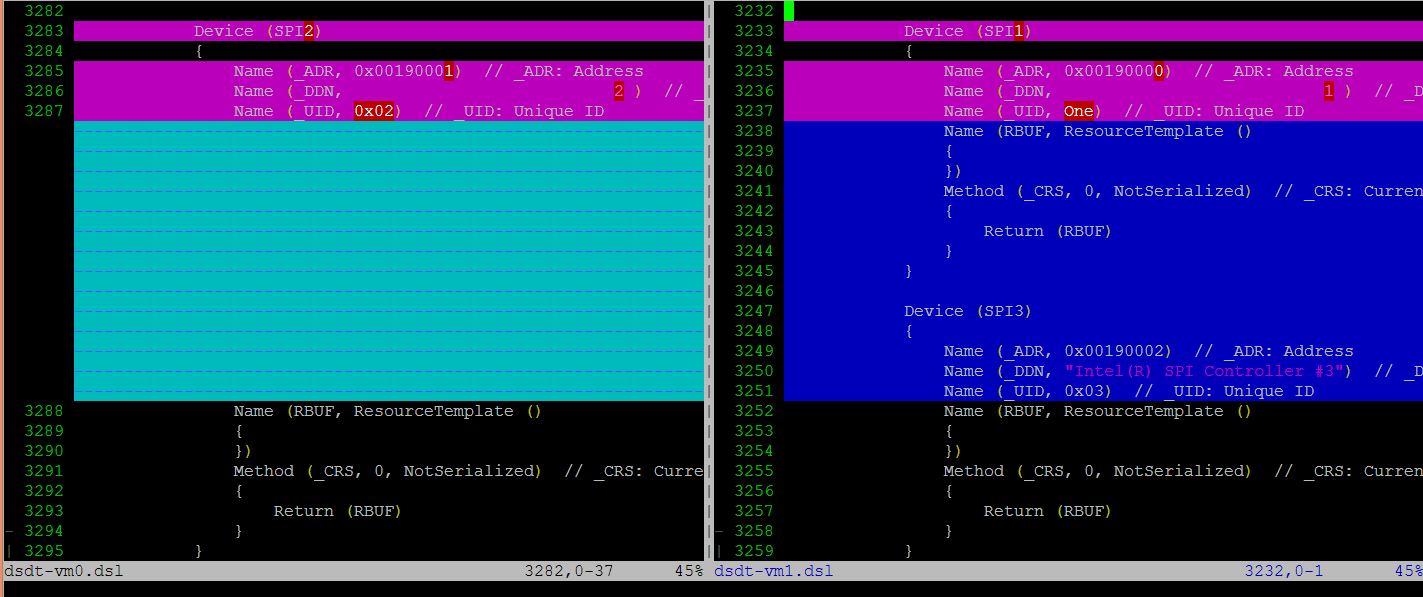
ACPI Emulation¶
An alternative ACPI resource abstraction option is for the SOS (SOS_VM) to own all devices and emulate a set of virtual devices for the UOS (NORMAL_VM). This is the most popular ACPI resource model for virtualization, as shown in the picture below. ACRN currently uses device emulation plus some device passthrough for UOS.
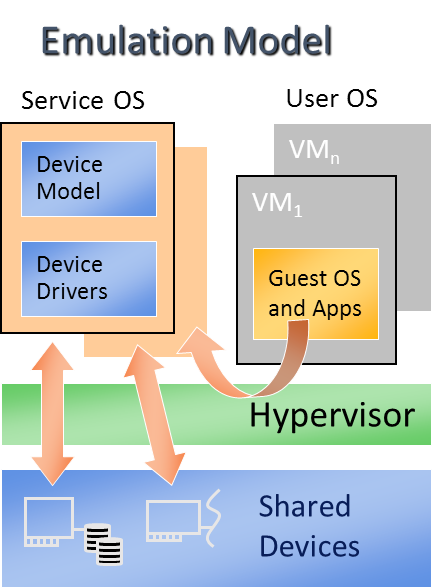
Figure 107 ACPI Emulation Model
For ACPI virtualization in ACRN, different policies are used for different components:
- Hypervisor - ACPI is transparent to the Hypervisor, and has no knowledge of ACPI at all.
- SOS - All ACPI resources are physically owned by SOS, and enumerates all ACPI tables and devices.
- UOS - Virtual ACPI resources, exposed by device model, are owned by UOS.
ACPI emulation code of device model is found in
hw/platform/acpi/acpi.c
Each entry in basl_ftables is related to each virtual ACPI table,
including following elements:
- wsect - output handler to write related ACPI table contents to specific file
- offset - related ACPI table offset in the memory
- valid - dynamically indicate if this table is needed
static struct {
int (*wsect)(FILE *fp, struct vmctx *ctx);
uint64_t offset;
bool valid;
} basl_ftables[] = {
{ basl_fwrite_rsdp, 0, true },
{ basl_fwrite_rsdt, RSDT_OFFSET, true },
{ basl_fwrite_xsdt, XSDT_OFFSET, true },
{ basl_fwrite_madt, MADT_OFFSET, true },
{ basl_fwrite_fadt, FADT_OFFSET, true },
{ basl_fwrite_hpet, HPET_OFFSET, true },
{ basl_fwrite_mcfg, MCFG_OFFSET, true },
{ basl_fwrite_facs, FACS_OFFSET, true },
{ basl_fwrite_nhlt, NHLT_OFFSET, false }, /*valid with audio ptdev*/
{ basl_fwrite_dsdt, DSDT_OFFSET, true }
};
The main function to create virtual ACPI tables is acpi_build that calls basl_compile for each table. basl_compile does the following:
- create two temp files: infile and outfile
- with output handler, write table contents stream to infile
- use iasl tool to assemble infile into outfile
- load outfile contents to the required memory offset
static int
basl_compile(struct vmctx *ctx,
int (*fwrite_section)(FILE *, struct vmctx *),
uint64_t offset)
{
struct basl_fio io[2];
static char iaslbuf[3*MAXPATHLEN + 10];
int err;
err = basl_start(&io[0], &io[1]);
if (!err) {
err = (*fwrite_section)(io[0].fp, ctx);
if (!err) {
/*
* iasl sends the results of the compilation to
* stdout. Shut this down by using the shell to
* redirect stdout to /dev/null, unless the user
* has requested verbose output for debugging
* purposes
*/
if (basl_verbose_iasl)
snprintf(iaslbuf, sizeof(iaslbuf),
"%s -p %s %s",
ASL_COMPILER,
io[1].f_name, io[0].f_name);
else
snprintf(iaslbuf, sizeof(iaslbuf),
"/bin/sh -c \"%s -p %s %s\" 1> /dev/null",
ASL_COMPILER,
io[1].f_name, io[0].f_name);
err = system(iaslbuf);
if (!err) {
/*
* Copy the aml output file into guest
* memory at the specified location
*/
err = basl_load(ctx, io[1].fd, offset);
} else
err = -1;
}
basl_end(&io[0], &io[1]);
}
After handling each entry, virtual ACPI tables are present in UOS memory.
For passthrough dev in UOS, we may need to add some ACPI description
in virtual DSDT table. There is one hook (passthrough_write_dsdt) in
hw/pci/passthrough.c for this. The following source code, shows
calls different functions to add different contents for each vendor and
device id:
static void
passthru_write_dsdt(struct pci_vdev *dev)
{
struct passthru_dev *ptdev = (struct passthru_dev *) dev->arg;
uint32_t vendor = 0, device = 0;
vendor = read_config(ptdev->phys_dev, PCIR_VENDOR, 2);
if (vendor != 0x8086)
return;
device = read_config(ptdev->phys_dev, PCIR_DEVICE, 2);
/* Provides ACPI extra info */
if (device == 0x5aaa)
/* XDCI @ 00:15.1 to enable ADB */
write_dsdt_xhci(dev);
else if (device == 0x5ab4)
/* HDAC @ 00:17.0 as codec */
write_dsdt_hdac(dev);
else if (device == 0x5a98)
/* HDAS @ 00:e.0 */
write_dsdt_hdas(dev);
else if (device == 0x5aac)
/* i2c @ 00:16.0 for ipu */
write_dsdt_ipu_i2c(dev);
else if (device == 0x5abc)
/* URT1 @ 00:18.0 for bluetooth*/
write_dsdt_urt1(dev);
}
For instance, write_dsdt_urt1 provides ACPI contents for Bluetooth UART device when passthroughed to UOS. It provides virtual PCI device/function as _ADR. With other description, it could be used for Bluetooth UART enumeration.
static void
write_dsdt_urt1(struct pci_vdev *dev)
{
printf("write virt-%x:%x.%x in dsdt for URT1 @ 00:18.0\n",
dev->bus,
dev->slot,
dev->func);
dsdt_line("Device (URT1)");
dsdt_line("{");
dsdt_line(" Name (_ADR, 0x%04X%04X)", dev->slot, dev->func);
dsdt_line(" Name (_DDN, \"Intel(R) HS-UART Controller #1\")");
dsdt_line(" Name (_UID, One)");
dsdt_line(" Name (RBUF, ResourceTemplate ()");
dsdt_line(" {");
dsdt_line(" })");
dsdt_line(" Method (_CRS, 0, NotSerialized)");
dsdt_line(" {");
dsdt_line(" Return (RBUF)");
dsdt_line(" }");
dsdt_line("}");
}
PM in Device Model¶
PM module in Device Model emulate the UOS low power state transition.
Each time UOS writes an ACPI control register to initialize low power state transition, the writing operation is trapped to DM as an I/O emulation request by the I/O emulation framework.
To emulate UOS S5 entry, DM will destroy I/O request client, release allocated UOS memory, stop all created threads, destroy UOS VM, and exit DM. To emulate S5 exit, a fresh DM start by VM manager is used.
To emulate UOS S3 entry, DM pauses the UOS VM, stops the UOS watchdog, and waits for a resume signal. When the UOS should exit from S3, DM will get a wakeup signal and reset the UOS VM to emulate the UOS exit from S3.